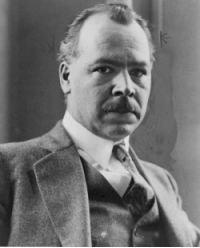Centers of Origin and Centers of Biodiveristy - Definitions, History and Uses
The terms ‘center of origin’ and ‘center of diversity’ have been used interchangeably. Though the two concepts are related and highly intertwined, there is a distinction between the two. One, center of diversity, is frequently used to identify the other.
Though the principle behind centers of origin and diversity applies to all organisms, they are most often used in relation to plants, particularly in plant breeding and studies of crop domestication.
Definitions
The center of diversity of a plant is defined as the geographic area wherein the plant exhibits the highest degree of variation. This variation manifests itself both at the population and genetic levels. That is, the center of diversity is where the highest number of cultivated types and wild relatives, as well as gene variants (alleles), exist. Based on the premise that it is only over time that genetic variation can be accumulated, the center of diversity often corresponds to the area where the plant has existed the longest, which is by definition the center of origin.
The center of origin of a plant is that location where it is considered to have first appeared. The primary criterion in identifying a center of origin is the presence of wild relatives.
Though centers of origin and diversity are highly correlated, they do occasionally diverge. This happens when there is a high variation in cultivated crops, but no or few wild relatives. The variation occurs due to environmental forces and human intervention that may have conspired to increase a plant’s diversity away from its site of origin. A plant species may also have more than one center of origin or diversity.
History
The concept of centers of origin was first proposed by the Russian scientist Nikolai Vavilov (1887-1943). Vavilov headed what was to be eventually named the Vavilov All-Union Institute of Plant Industry from 1920 to 1940. One of his missions was to collect crop-related germplasm for use in national plant breeding projects.
During his explorations, Vavilov observed that crop diversity tends to be concentrated around specific regions. He proposed that these concentrations of high variability indicated the regions where domestication of these crops began. This concept went against the prevailing view that cultivation of plants started randomly all over the world.
In 1926, Vavilov published his theories in his “Studies on the Origin of Cultivated Plants”. He identified eight primary areas of diversity and origin of cultivated plants. These areas came to be known as the Vavilov Centers of Diversity or simply, Vavilov Centers. Following are these eight centers and some of the crops for which they are centers of origin/diversity:
1. China – buckwheat, soybean, peach, cherry, onion
2. India/Indochina – rice, chickpea, cucumber, mango, orange
3. Central Asia – common wheat, peas, lentils, mungbean
4. The Near East – rye,alfalfa, fenugreek, lentils
5. The coast of the Mediterranean Sea – durum wheat, cabbage, lettuce, celery
6. Ethiopia – barley, pearl millet, flax, coffee, sesame
7. Southern Mexico/Middle America – corn, lima beans, cotton, sweetpotato, pepper
8. South America – strawberry, potato, tomato, pumpkin, pepper
In 1971, American scientist Jack Harlan (1917-1998) proposed a modification to the concept of Vavilov Centers. He theorized that that there are three regions in which domestication of plants originated, and that for each, there is a definable center of origin and a more disperse noncenter, each of which which interacts with the other. These regions are:
Near East (center) and Africa (noncenter)
North China (center) and Southeast Asia and the South Pacific (noncenter)
Mesoamerica (center) and South America (noncenter)
While the designations of centers of origin and diversity continue to evolve, particularly with modern approaches using DNA and molecular biology, Vavilov and Harlan’s theories are still useful in the study of plant origins and crop domestication.
Uses
The study of centers of origin and diversity is helpful in plant breeding and genetic research. The genetic variation in these centers often serves as a rich reserve of genetic material for the improvement of cultivated crops. Genes for disease, pest and stress resistance, and nutritional quality are just some of the resources that can be found in these reserves.
References:
Centers of Diversity, Crop Adaptation, Oregon State University
Biodiversity International
George Acquaah (2006). Principles of plant genetics and breeding. Blackwell Publishing.
***
image credit: Library of Congress
